From August 12 through the 19th I was in Southern California visiting family and checking on the house and garden, so I had the odd, unsettling experience of leaving one garden just hitting its stride and dropping in on one in survival mode. I knew I’d be facing a dusty, very dry garden of mostly succulents, shrubs, and grasses and possibly some wrenching losses. Fortunately, losses were minimal, and the little garden surprisingly chugged along in my absence without much assistance. (The previous houseguests, staying over a month, mentioned that they hadn’t seen anybody watering — checking with the caretaker, she had been knocked flat by Covid and was non compos mentis for a couple weeks and had been too brain-fogged to remember to let me know. The garden (and pots!) went unwatered at least three weeks, maybe more.)
That in a nutshell describes the difference between the two gardens in summer. Endurance is the goal for the zone 10 garden in summer, threatened by short and long-term water bans. Conversely, the coastal Oregon garden began to tentatively express itself in July and then really accelerated growth in August, as seen in these photos I took just before leaving for Long Beach. I happened to plant a lot of big-statured, late-season perennials, and these really began to find their footing at the end of July. I am just bowled over, because I really didn’t expect much at all the first year. There has been no rain since June, so the Oregon garden is reliant on supplemental irrigation, just like the zone 10b SoCal garden (except that rain-free condition stretches basically year-round), but the mostly soft light and benign temperatures at the Oregon coast keep growth steady. I’m convinced the extra hour of daylight is a positive factor too.
In early July I mail-ordered some salvias from Flowers By The Sea which have leapt into growth. Many are variations on salvias I’ve grown before, such as Salvia chiapensis, but this time in the form of ‘Elk Giant.’ And guaranitica again, but the pale blue form, ‘Elk Argentine Skies,’ a superior selection of AS.
I love the deep green leaves of Salvia sagittata as much as the cobalt blue flowers on delicate stems and wanted to see how it performed in zone 8b. I suspected it would be much happier, and so far that seems to be the case. Winter of course will be the challenge, whatever it brings.
Salvia patens hasn’t been a success in the zone 10b garden, so I wanted to specifically trial it in Oregon, a lilac-colored form called ‘Chilcombe.’ Love.
Salvia pulchella x involucrata was also included in the order, because involucratas have never liked zone 10 much either. The leaves on all of the salvias are lush and healthy, and only the involucrata has yet to set buds or flower, still developing a luscious dome of crinkly, apple-green leaves and red stems.
Meanwhile, back in zone 10b last week….getting house and garden ready for new houseguests, I so enjoyed getting reacquainted with the plants. Fingers crossed, I may have found someone who will sweep up the debris from the trees off the patios and walkways, which is the bulk of the work that needs doing when we’re away.
Since I’ve been culling out the most water-intensive potted plants over the past year, somehow everything managed to hang on. Most of the work in the garden was removing dead leaves, trimming back the rambunctious passionflower, cutting back spring/summer herbaceous stuff, leaving the succulents to carry the torch. Incredibly tough, beautiful plants. And another dry spell is ahead for the garden, this time imposed by our water district while they work on pipe repairs.
So there you have a look at two very different gardens in August, one that was in the 90s all last week and one that’s in the 70s this week. One at a latitude of roughly 33 degrees, the other at a latitude of roughly 45 degrees. One that is undergoing record drought, the other having just experienced record rainfall. More soon!



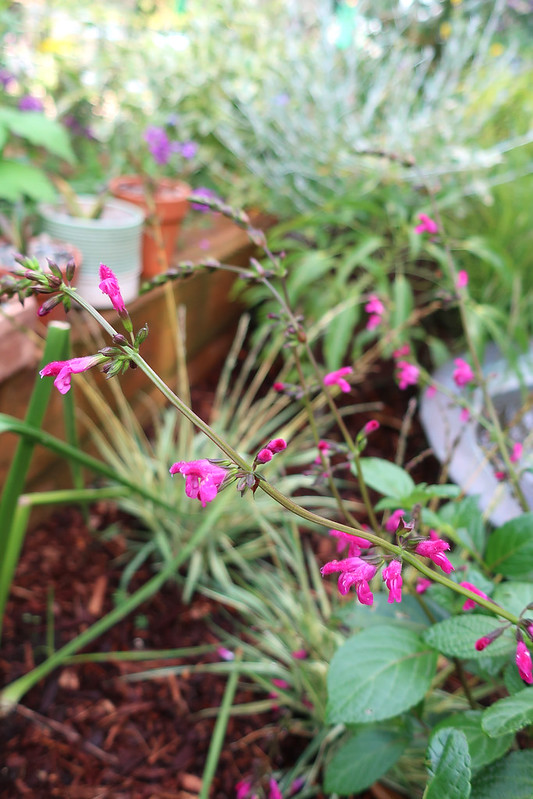





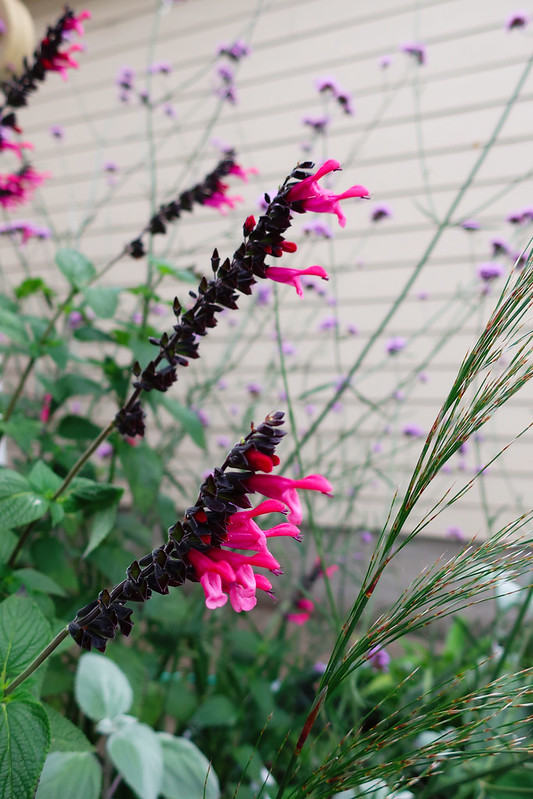
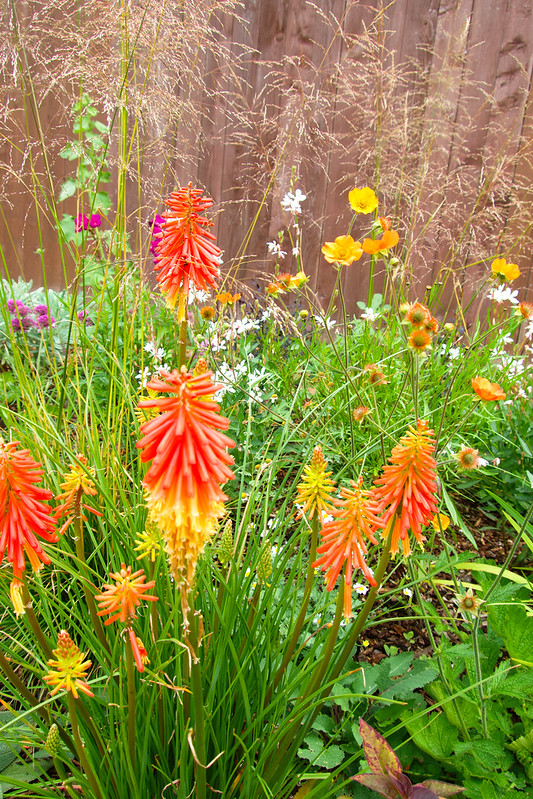





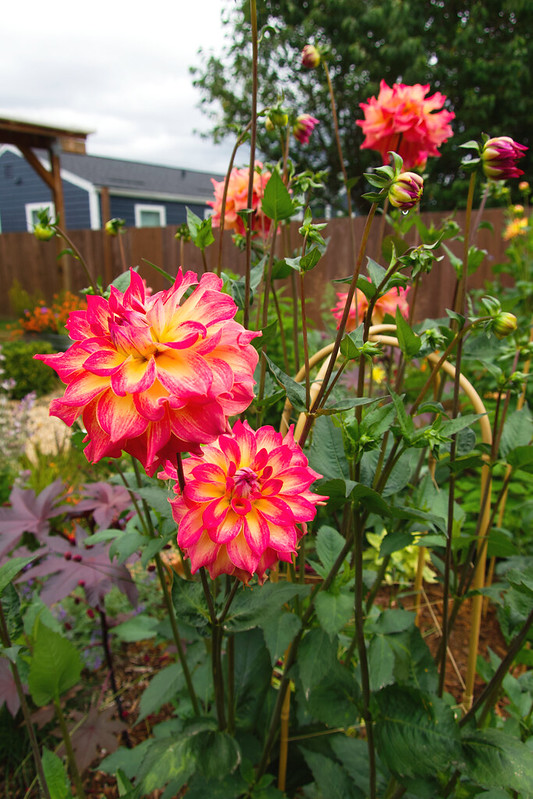
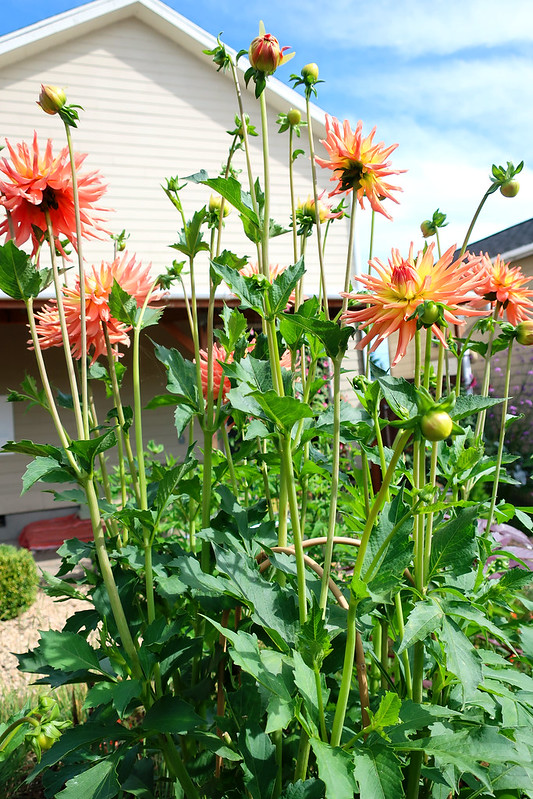

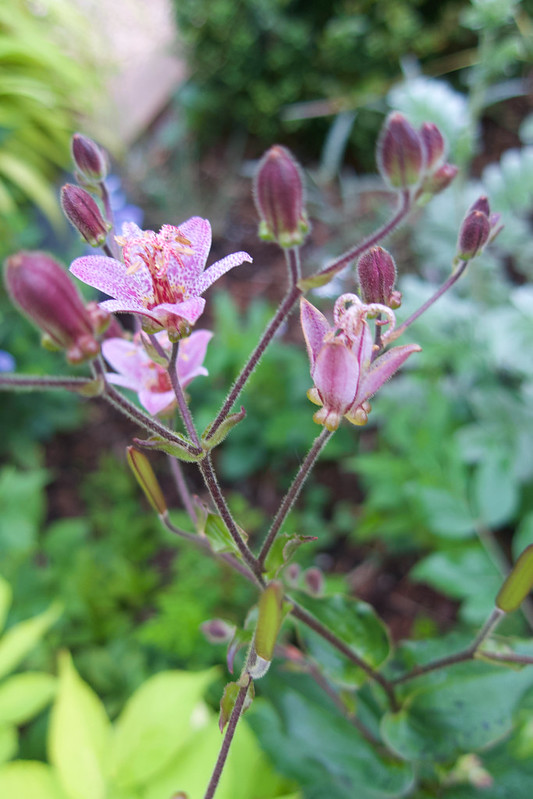

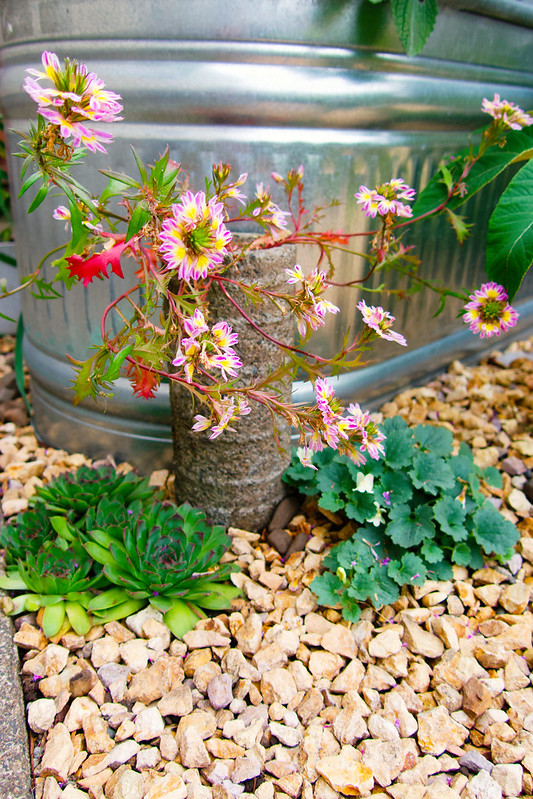
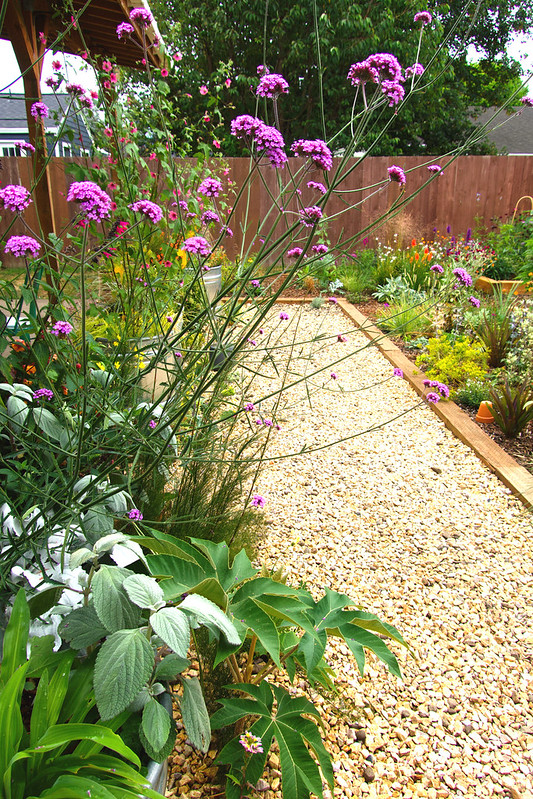
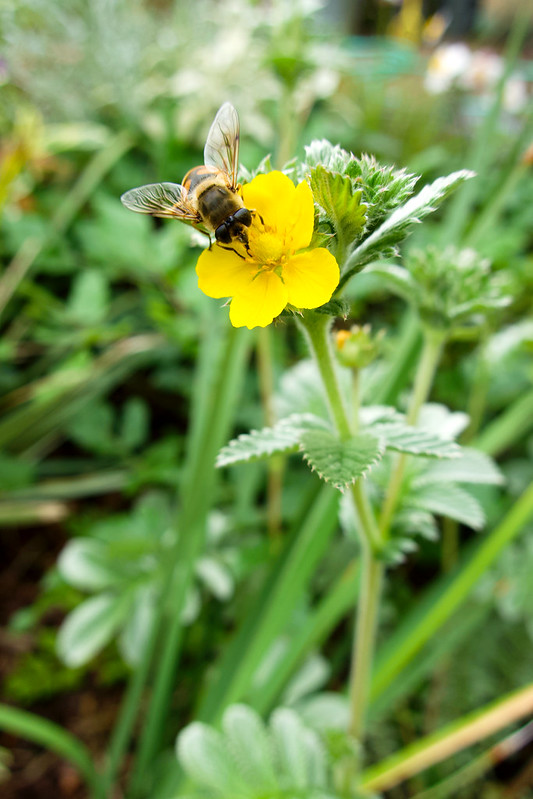







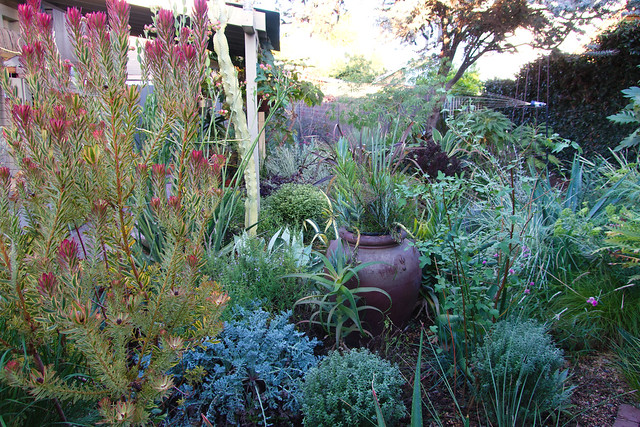
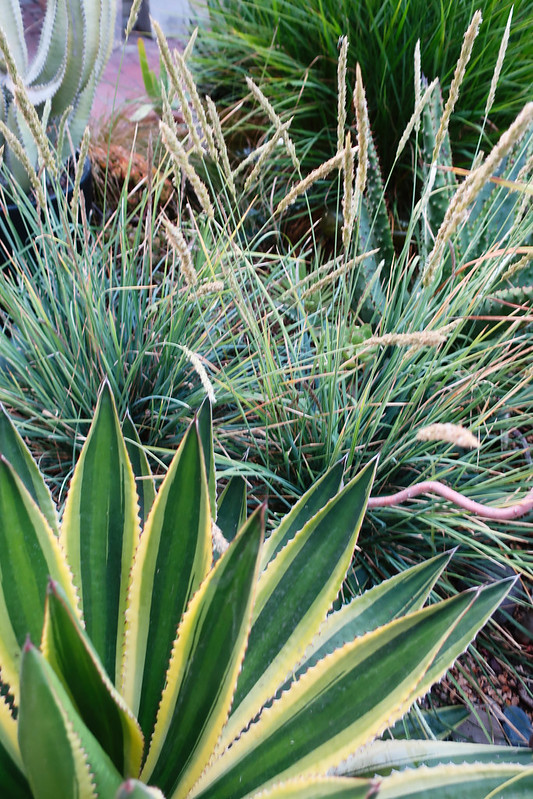



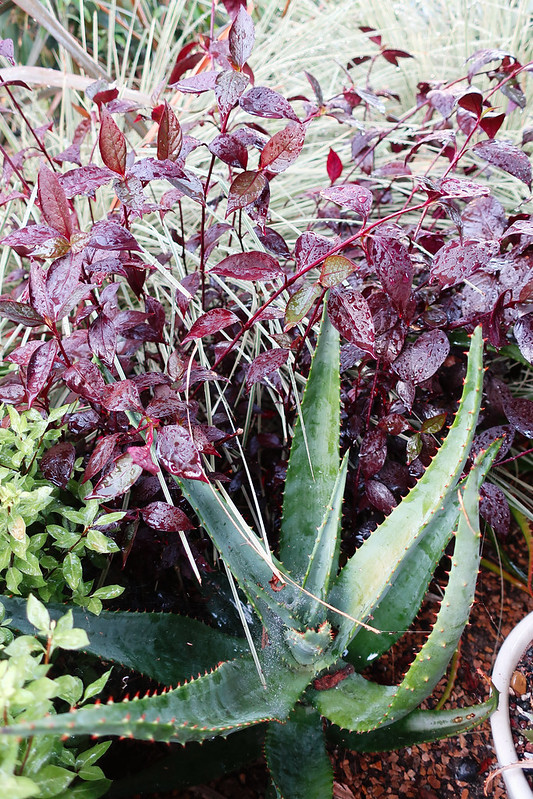


I cannot get over how stunning your Oregon garden is. The lush tapestry of perennials you chose made my heart beat faster. I’m a big fan of salvias as well. I’m trying a newish autumn sage hybrid called ‘Amethyst Lips’ after having seen it in a friend’s garden in Davis and then again in Hoover Boo’s garden in Orange County.
As for your Long Beach garden, it could be the poster child of water-wise plant selection. Three weeks without water is a feat for in-ground plants, but a massive triumph for potted plants! You chose very well!
It was so lovely to see your Long Beach garden again, I’ve missed it! Thank god you’ve assembled a tough bunch of plants able to withstand complete neglect, I am impressed. As for the Oregon garden—wow! So far and so fast, it looks much older than it’s age (in a good way). I think I am the only gardener on the West Coast who doesn’t drool over salvia. What’s wrong with me!?
@Gerhard, I’ve seen that salvia and prefer it to ‘Hot Lips.’ I think what’s helped with the LB garden is everything is fairly well established. I had moved a Yucca rostrata within the last year, and that was a casualty. There’s a big, sorry patch of Hedychium ‘Tara’ that I’d like to move north because it’s suffering in the dryness but still hanging on. I watered really well so we’ll see if it makes it into fall/winter. It’s been fun playing around with perennials — so many cool plants out there!
@Loree, and me and the garden miss you too! As far as salvias, there’s nothing wrong with you — I know you’re a huge fan of Salvia discolor!
I’m glad the 10b garden survived its untended period and I hope it strides through the 15-day water ban just as well. I hope you gave it a good soak before you headed north. Your Oregon garden flaunts the colors I dream of, at least during the summer months. Dahlias and sweet peas mingling together! I can’t even imagine that. The Salvias are gorgeous but then you’ve always had great success with members of that genus. I’ve also had zero success with Lepechinia hastata here.
FYI, after potting up about 2 dozen Agave ‘Stained Glass ‘ bulbils for myself and friends, I planted most of the rest in flats with some soil and offered them and those remaining on the bloom stalk to the Palos Verdes C&SS. A representative picked this up this afternoon. A Brit, he described the donation as “brilliant” 😉
@Kris, you are the best steward of agave bulbils! So glad they’re being given to gardeners. I hope the patient is resting easier. I’m afraid I may have signed up garden help rather like yours — he’s already cut the tips off of my nolina that were in the pathway, and it’s not even a spiky plant! I told him hands off my agaves, but we’ll see. Got to give up control a bit for the greater good!
I had to smile at your picture of a ‘bee’ on your flower, it’s actually Eristalis tenax, the common drone fly. It’s a bee mimic, relying on predators leaving it alone for fear of being stung, which of course it cannot do, having no stinger. You must have stagnant water somewhere nearby, the larvae are aquatic like mosquito larvae are.
@Sue, that is a fascinating bit of entomology, a bee mimic! There is no doubt stagnant water nearby in this five-river valley during summer. I’ll keep an eye out for more sightings — thank you!
Your two gardens are the poster child for “Right plant. Right place.” Both look fabulous and seem to be doing well despite your not being there constantly to dote on them. Must be fun to watch your PNW garden grow so quickly.